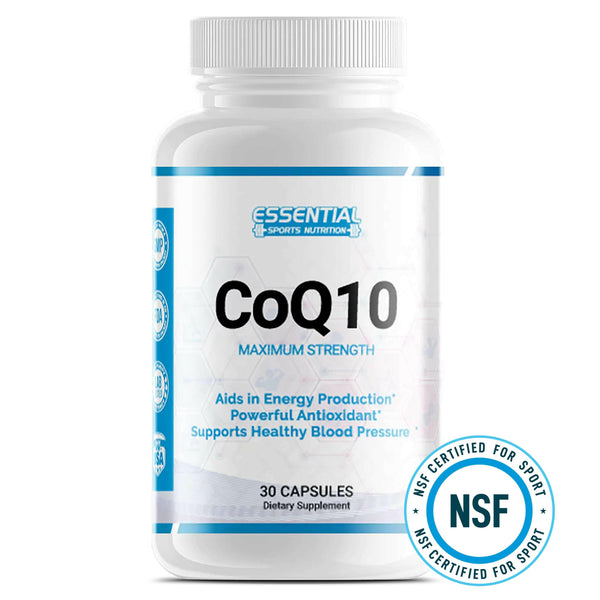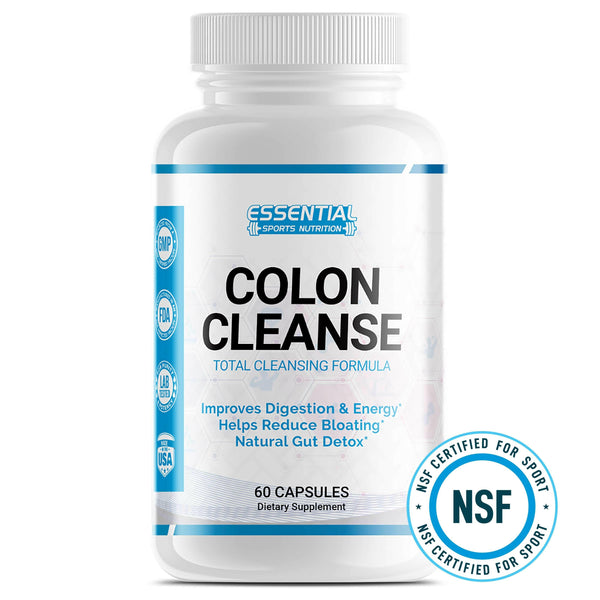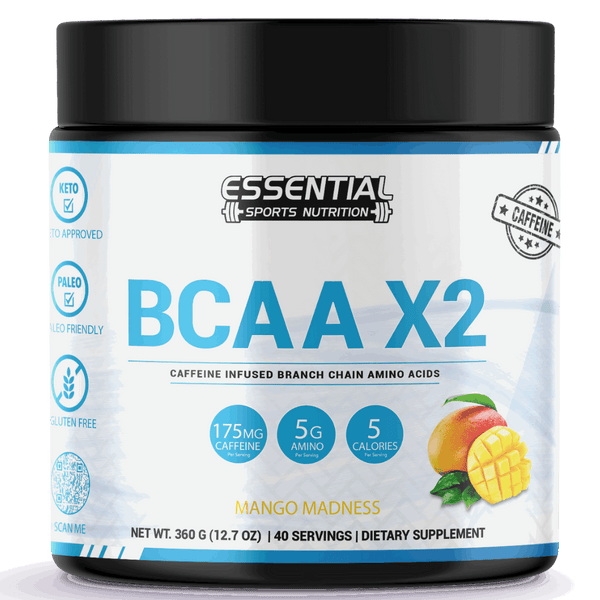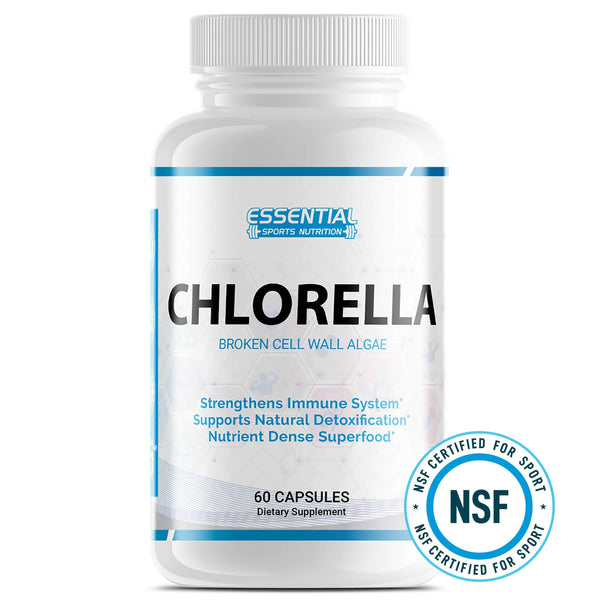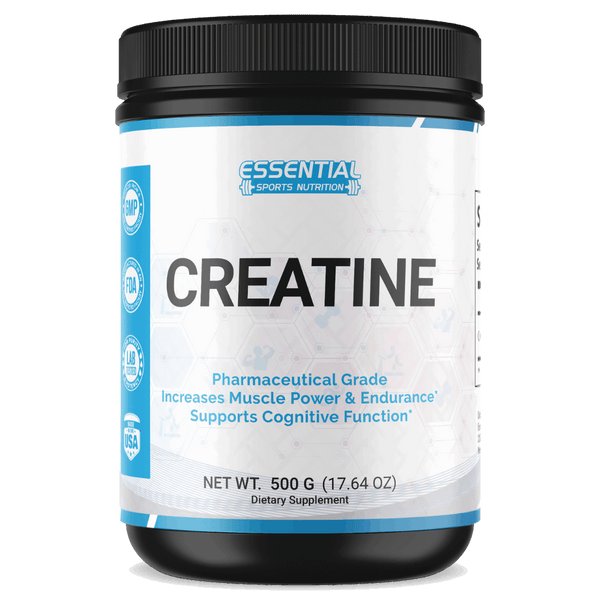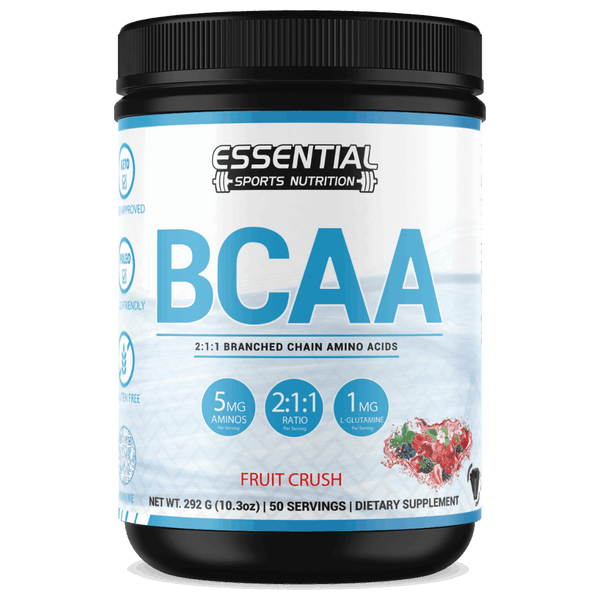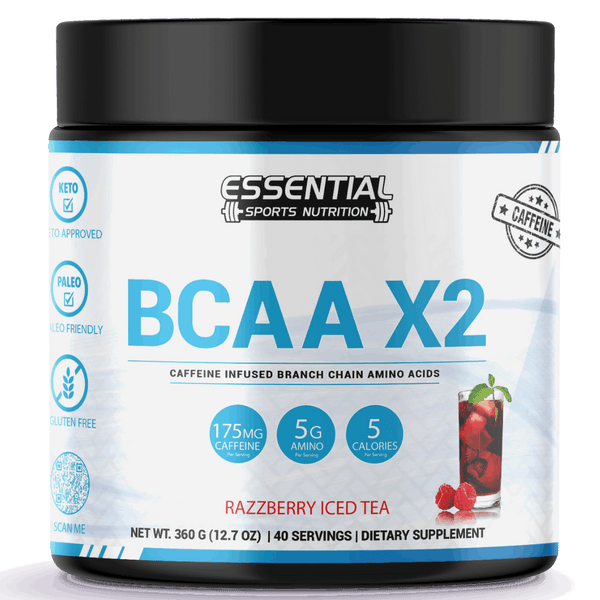Best Calf Exercises: Effective Calf Workouts for Building Mass
Want bigger calf muscles? You need a good workout plan. It's not just about doing calf raises over and over. You must mix up your exercises to hit both the gastrocnemius and soleus muscles right.
To see real gains, focus on exercises that push your muscles hard. Use weights that challenge you and move in ways that work your muscles from all sides. Good form and mental focus can make your muscles work harder, leading to bigger gains.
For muscle growth, a balanced workout is key. Aim for 6-12 reps in each set, doing this 2 times a week. Add in rest days and eat well, and you'll see your calf muscles get stronger and more defined.

Key Takeaways
- Calf exercises for mass should include various movements to target gastrocnemius and soleus muscles.
- Optimal calf workout for size involves 6-12 reps, 4-5 sets, twice a week.
- Progressive overload is essential to increase calf muscle mass effectively.
- Quality form and visualization can enhance muscle engagement.
- Proper rest and nutrition support muscle growth and recovery.
Understanding the Anatomy of the Calf Muscle
The calf muscle is key in your lower leg. It helps with walking, running, and jumping. Knowing about the gastrocnemius and soleus can help you choose the best calf exercises.
The Gastrocnemius Muscle
The gastrocnemius is the biggest calf muscle. It has two parts: the medial and lateral heads. This muscle makes your calves look big.
It bends your knee and helps push you off the ground. To work it well, do calf exercises with your legs straight.
The Soleus Muscle
The soleus muscle is under the gastrocnemius. It bends your foot. It's very active when your knee is bent.
It's important for standing, walking, or running for a long time. Doing seated calf raises is great for it.
| Calf Exercise | Muscle Targeted | Recommended Reps |
|---|---|---|
| Donkey Calf Raises | Gastrocnemius | 15-20 |
| Seated Calf Raises | Soleus | 15-20 |
| Toe Touch Farmer's Walk | Gastrocnemius and Soleus | 15-20 |
| Calf Launchers | Soleus | 15-20 |
Why Calf Exercises Are Essential for Mass Building

Calf exercises are key for leg development, adding to both mass and looks. Focusing on calf muscles through specific workouts is crucial for balanced leg growth.
Importance of a Specific Calf Workout Routine
A good calf workout routine is essential for full calf muscle development. The calf area has two main muscles: the gastrocnemius and the soleus. The gastrocnemius is more visible and active when the knee is straight. The soleus, located beneath, is most active when the knee is bent.
To train the calves well, do 15-20 reps for each set. Use a variety of exercises that target both muscles.
Effective calf exercises include Donkey Calf Raises and Sit-to-Stand Calf Raises. Also, try Toe Touch Farmer’s Walk and Dumbbell Calf Hops. Remember to do 1-½ Calf Raises and Single-Leg Calf Raises too. Train the calves 2-3 times a week for best results.
Common Misconceptions About Calf Training
Many think standard leg workouts are enough for the calves. But, for best growth, include specific calf training. Seated Calf Raises and Leg Press machine exercises are not the best. Instead, focus on Standing Calf Raises and dynamic exercises for the soleus.
Using drop sets and supersets can make your calf workouts more intense. When adding weight, increase it by 5-10% as you get stronger. Always focus on proper form and range of motion for the best results.
Understanding calf training and clearing up misconceptions is key to stronger, more defined calves. With a strategic workout approach, you can stimulate muscle growth and enjoy a balanced, powerful lower body.
Best Calf Exercises for Mass
To build strong calf muscles, it's key to focus on the right exercises. The calf area has two main muscles: the gastrocnemius and the soleus. Working these muscles well helps in even growth and development.
Standing Calf Raises
Standing calf raises target the gastrocnemius muscle. This muscle helps in bending the knee and moving forward, like when jumping or running. Doing this exercise with straight knees and weights can increase muscle growth. Aim for 15-20 reps, twice a week, for best results.
Seated Calf Raises
Seated calf raises focus on the soleus muscle, which is under the gastrocnemius. This muscle is more active when the knee is bent. This makes seated calf raises great for it. It also improves walking and running, adding to leg strength. Keep proper form and do more reps, as fitness experts suggest.
Toe Touch Farmer’s Walk
The toe-touch farmer’s walk is great for tiring the calf muscles and building endurance and mass. It fully works the calf muscles, especially the gastrocnemius, through walking and toe-touching. It's a strong workout for balanced muscle growth. Focus on proper form to get the most out of it.
Here's a detailed comparison of the effectiveness of different calf exercises:
| Exercise | Target Muscle | Recommended Reps | Frequency |
|---|---|---|---|
| Standing Calf Raises | Gastrocnemius | 15-20 | Twice per week |
| Seated Calf Raises | Soleus | 15-20 | Twice per week |
| Toe Touch Farmer’s Walk | Gastrocnemius | 15-20 | Twice per week |
Calf Exercises You Can Do at Home

You don't need expensive gym equipment to build calf muscle. Bodyweight calf exercises can be done at home. They help with strength, flexibility, and growth. Let's look at two great exercises you can do at home.
Bodyweight Calf Raises
Bodyweight calf raises are easy but effective. They target the gastrocnemius muscle. This helps increase your calf size and strength.
To do them, stand on a flat surface. Lift your heels off the ground. Hold for a few seconds, then lower them back down. Do 15-20 reps per set, 2-3 times a week.
Calf Launchers
Calf launchers are another great home exercise. They focus on the soleus muscle. This muscle adds depth and definition to your calves.
To do calf launchers, sit with your legs extended. Then, push your toes down quickly. Repeat for 15-20 reps per set. Do this 2-3 times a week for better results.
Here's a table comparing these exercises:
| Exercise | Muscle Targeted | Recommended Reps | Frequency |
|---|---|---|---|
| Bodyweight Calf Raises | Gastrocnemius | 15-20 | 2-3 times/week |
| Calf Launchers | Soleus | 15-20 | 2-3 times/week |
Adding these exercises to your routine will help you build stronger, more defined calves at home.
How to Increase Calf Muscle Mass Effectively

To grow your calf muscles, you need the right plan. Using progressive overload and resistance bands and weights is key. Let's explore the best ways to see results.
Progressive Overload Techniques
Progressive overload is vital for stronger calf muscles. It means you increase the weight or reps over time. This keeps your muscles growing and stops them from getting stuck.
Begin with bodyweight calf raises. Then, add weights like dumbbells or barbells. Try Single-Leg Calf Raise to target each muscle, boosting strength and endurance.
Using Resistance Bands and Weights
Resistance bands and weights help a lot. Bands offer steady tension, perfect for progressive overload. Start with Standing Calf Raise and add bands for more challenges.
Adding dumbbell calf hops improves endurance and balance. These tools keep your calf muscles working hard, which is key for growth.
Using progressive overload, bands, and weights takes your calf workouts to the next level. These methods are crucial for anyone wanting to grow their calf muscles. They help you overcome the natural resistance and daily use of these important muscles.
The Role of Volume and Frequency in Calf Workouts

To build bigger calves, understanding volume and frequency is key. Finding the right balance in sets and reps is crucial. Also, knowing how often to train is important for continuous growth. Regular, well-structured workouts can lead to impressive results.
Optimal Sets and Reps for Growth
Choosing the right sets and reps is vital for calf growth. Volume plays a big role, from Maintenance Volume (2-4 sets) to Maximum Recoverable Volume (up to 24 sets). This shows how different set ranges impact calf development.
Weekly workouts should mix moderate (10-20 reps) and heavier (5-10 reps) or lighter (20-30 reps) ranges. This ensures all muscle fibers are worked well.
| Volume Range | Sets per Week |
|---|---|
| Minimum Effective Volume | 4-6 sets |
| Maximum Adaptive Volume | 6-16 sets |
| Maximum Recoverable Volume | 16-24 sets |
| Maximum Adaptive Volume - Primary Priority | 16-24 sets |
| Maximum Recoverable Volume - Primary Priority | 24-32+ sets |
Research shows 12 sets of calf exercises per week is best. Fewer than 9 sets may not be effective. Going over 12 sets doesn't significantly improve muscle growth. So, aiming for 10-12 sets weekly is a good strategy.
Frequency of Training Sessions
Matching volume with training frequency is crucial for calf growth. Calves can handle more frequent workouts. Aim to train calves at least twice weekly, using 2 to 4 different exercises.
Mixing rep ranges and including both heavy and light weights in each session helps. This approach promotes muscle growth and recovery. A structured plan that balances volume and frequency makes building bigger calves more attainable. Regularly check and adjust your routine to maximize muscle growth, improving strength and appearance in your calves.
Advanced Techniques for Building Bigger Calves

To get stronger and more defined calves, you need to try advanced training methods. These techniques push your muscles to grow and get stronger. With hard work and regular practice, you can see great results.
Tempo training is a key part of advanced calf training. It involves controlling how fast you move during exercises. This slow approach keeps your muscles tense longer, helping them grow and get stronger.
Another great technique is to increase the range of motion in your calf exercises. Try calf raises on a raised platform so your heels go below your toes. This targets the bigger part of your calf, helping it grow.
Changing how long you rest between sets can also help. Short breaks, like 30 seconds, keep your muscles working hard. Adding single-leg calf raises to your routine also makes your calves work harder.
Explosive movements, like box jumps, are also great for your calves. They use fast-twitch muscles, which are important for strength and athletic ability. Box jumps work your calf muscles and help improve your overall muscle tone.
Mixing heavy and light weights in your training is smart. For example, use heavy weights for 4-6 reps and light weights for 25-50 reps. This targets different muscle fibers and helps your calves grow.
Training your calves often is key to growth. Try intense training for four weeks, then go back to regular workouts. This helps keep your calf muscles growing and improving.
Finally, try eccentric training by walking on tiptoes and doing calf raises on stairs. These activities keep your calves working every day. Doing high-rep calf raises before bed also helps keep your calves growing.
Add these advanced techniques to your workout routine to see big improvements. Remember, being consistent, varied, and intense is crucial for strong and defined calf muscles.
Tips for Enhancing Calf Muscle Growth Through Nutrition

For the best calf muscle development, you need the right nutrition. You should eat a mix of protein, carbs, and healthy fats. Protein from lean meats, dairy, and legumes helps your muscles grow after effective calf exercises.
Carbs are key for energy during workouts and recovery. Eat whole grains, fruits, and veggies for a steady energy boost. Healthy fats from avocados, nuts, and olive oil help with muscle function and hormones.
Don't forget about hydration for nutrition for muscle growth. Drinking enough water before, during, and after workouts is crucial. It keeps your energy up and helps your muscles work better during intense calf exercises.
Supplements can also help with calf muscle development. Creatine boosts muscle mass and strength. BCAAs reduce soreness and speed up recovery after workouts.
Here’s a quick guide to match your nutrition with your effective calf exercises:
| Key Nutrient | Role | Sources |
|---|---|---|
| Protein | Muscle Repair and Growth | Lean meats, dairy, legumes |
| Carbohydrates | Energy Supply | Whole grains, fruits, vegetables |
| Healthy Fats | Hormonal Balance, Metabolism | Avocados, nuts, olive oil |
| Water | Hydration, Muscle Function | Water, hydrating foods |
| Supplements | Muscle performance and recovery | Creatine, BCAAs |
By following these nutrition tips, you'll see great results in calf muscle development and get the most out of your effective calf exercises.
How to Properly Warm Up and Stretch Your Calves

A good warm-up for your calves is key. It helps stretch them well and gets you ready for a workout. It also boosts muscle function and blood flow.
Benefits of Dynamic Stretching
Dynamic stretching has many benefits. It increases flexibility and movement range. It's great for calf muscles, lowering injury risk. It warms up muscles well, getting them ready for tough calf exercises.
- Enhances range of motion and flexibility
- Reduces the risk of injury
- Prepares the muscles for intense activities
Essential Warm-Up Routines
Good warm-ups prevent calf injuries and boost performance. Start with light cardio to get blood flowing. Then, do exercises that stretch your calves.
Dynamic stretching works both gastrocnemius and soleus muscles. These are key for moving well during your workout.
- Light cardio (5-10 minutes)
- Dynamic stretching: leg swings and calf raises
- Foam rolling for muscle relaxation
- Static stretching post-workout to prevent tightness
By following these warm-up routines, your calves are ready. This lowers injury risk. Dynamic stretching and a good warm-up are vital for athletes and fitness lovers to get the most from their calf workouts.
A 25-Minute Comprehensive Calf Workout Routine
To get strong and defined calves, you need a good calf workout routine. This 25-minute plan targets the gastrocnemius and soleus muscles. It ensures balanced muscle work and brings results.
Exercise Breakdown
Here's a detailed breakdown of the best exercises for calf muscles involved in this routine:
- Standing Calf Raises: Targets the gastrocnemius muscle. Perform 3 sets of 15-20 reps.
- Seated Calf Raises: Focuses on the soleus muscle. Complete 3 sets of 15-20 reps.
- Toe Touch Farmer’s Walk: Engages both the gastrocnemius and soleus, involving dynamic movement. Conduct 3 sets of 20-30 seconds.
- Dumbbell Calf Hops: Enhances muscle endurance and explosiveness. Execute 3 sets of 15-20 reps.
- 1 ½ Calf Raises: For added intensity, emphasize both the lower and upper ranges of motion. Perform 3 sets of 15-20 reps per leg.
Rest Periods and Recovery
Rest is key in a calf workout routine. Resting between sets helps muscles repair and grow. Aim for 30-45 seconds of rest between sets.
Also, use foaming rolling for the gastrocnemius and Achilles tendon. This reduces muscle stiffness and improves ankle mobility.
Don't forget to stretch your hamstrings and calves after working out. Stretching helps with recovery and injury prevention. Aim to work your calves at least twice a week. Tailor your exercises to your fitness level.
Using recovery techniques like soft tissue massage can help with soreness. A dedicated and structured calf workout routine will lead to noticeable muscle improvements.
Additional Tips for Building Strong, Defined Calf Muscles

Building strong calves is more than just doing exercises. It's also about improving the mind-muscle connection during workouts.
Mind-Muscle Connection
Try to picture your calf muscles working hard with each rep. This mental effort can make your workouts more effective. The gastrocnemius muscle works best when your knee is straight, like when you walk on tiptoes or jump.
The soleus muscle, on the other hand, is more active when your knees are bent. This is true for seated calf raises. Building a strong mind-muscle connection is essential for real muscle growth.
Staying Consistent with Your Calf Training
Consistency is key in calf training. Aim to do calf exercises two to three times a week. Do eight to twelve reps per set, with one to three sets total. Increase the weight by 10% to 15% every two weeks.
Regular calf training keeps your strength growing and prevents plateaus. Activities like running, walking, and hiking uphill also help. Sports like soccer and basketball are great, too. They make your calf workouts more interesting and effective.
By focusing on the mind-muscle connection and staying consistent, you can build stronger, more defined calf muscles. This will improve your leg strength and athletic performance.
Conclusion

To effectively build bigger calf muscles, a strategic workout plan is essential. It's crucial to target both the gastrocnemius and soleus muscles with a variety of exercises, rather than relying solely on calf raises. Incorporating weights and maintaining good form will push your muscles to grow, while focusing on a balanced regimen of 6-12 reps and adequate rest days will yield noticeable results. Nutrition plays a significant role in this process; ensure you're consuming sufficient protein, carbohydrates, and healthy fats to support muscle repair and energy levels. Advanced techniques, such as progressive overload and varying your workouts, will further enhance muscle growth. Consistency is key—aim to work your calves two to three times a week to achieve the desired strength and definition. By following these guidelines, you can transform your calves and boost your overall leg development.
Best Exercises for Building Calf Muscles FAQ
Q: Why should I focus on calf exercises for mass building?
A: Calf exercises are key because these muscles often get overlooked. This leads to imbalances and underdevelopment. By focusing on them, you can boost strength, definition, and size. This improves your athletic performance and looks.
Q: How do I build calf muscles effectively?
A: To grow calf muscles, use specific exercises that work them fully. Increase the weight or reps over time. This helps your muscles grow stronger. Include standing and seated calf raises, and plyometric movements for better results.
Q: What are the best exercises for calf muscles?
A: Top calf exercises include standing and seated calf raises, toe touch farmer’s walks, and bodyweight calf raises. These exercises work both the gastrocnemius and soleus muscles. They help in balanced strength and development.
Q: How can I build calf muscle mass at home?
A: At home, do bodyweight calf raises and calf launchers. These exercises don't need equipment. They effectively target the calf muscles, helping in strength, flexibility, and growth.
Q: What is the anatomy of the calf muscle?
A: The calf muscle has two main parts: the gastrocnemius and the soleus. The gastrocnemius is larger and helps bend the knee and push off the ground. The soleus is beneath it and helps flex the foot downward, especially with a bent knee.
Q: Are there any common misconceptions about calf training?
A: Yes, many think calves don't need special attention. They believe regular leg workouts are enough. But calves need specific exercises for significant growth and definition.
Q: How often should I train my calves for growth?
A: Train your calves about twice a week, along with leg workouts. This frequency helps them grow by providing enough stimulation.
Q: What are progressive overload techniques for calf training?
A: Progressive overload means increasing workout intensity by adding weight or reps. It helps your muscles grow stronger and overcome plateaus.
Q: How important is nutrition for calf muscle growth?
A: Nutrition is key for calf muscle growth. You need protein, carbs, and healthy fats for muscle repair and growth. Staying hydrated and using supplements like creatine and BCAAs can also help.
Q: What are the benefits of dynamic stretching before calf workouts?
A: Dynamic stretching before workouts increases flexibility and circulation in the calf muscles. It prepares them for intense exercises, reducing injury risk and improving performance.
Q: Can I do calf exercises without gym equipment?
A: Yes, you can do effective calf exercises at home without equipment. Bodyweight calf raises and calf launchers are great for building muscle strength and size.
Q: What is the mind-muscle connection, and how does it help in calf training?
A: The mind-muscle connection means focusing on the muscle during exercises. Visualizing muscle contractions enhances activation. This leads to more effective workouts and better muscle growth, especially in the calves.




